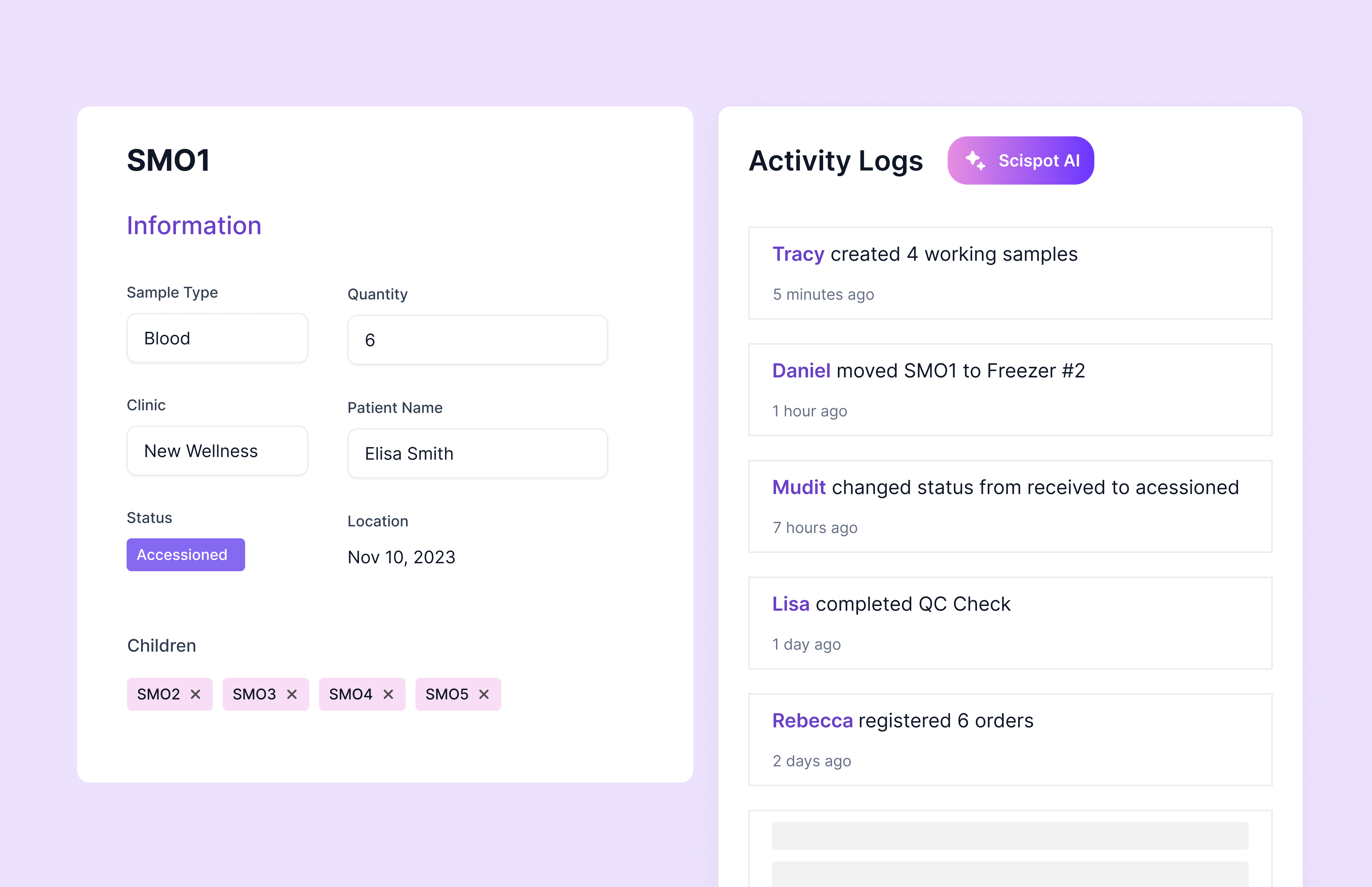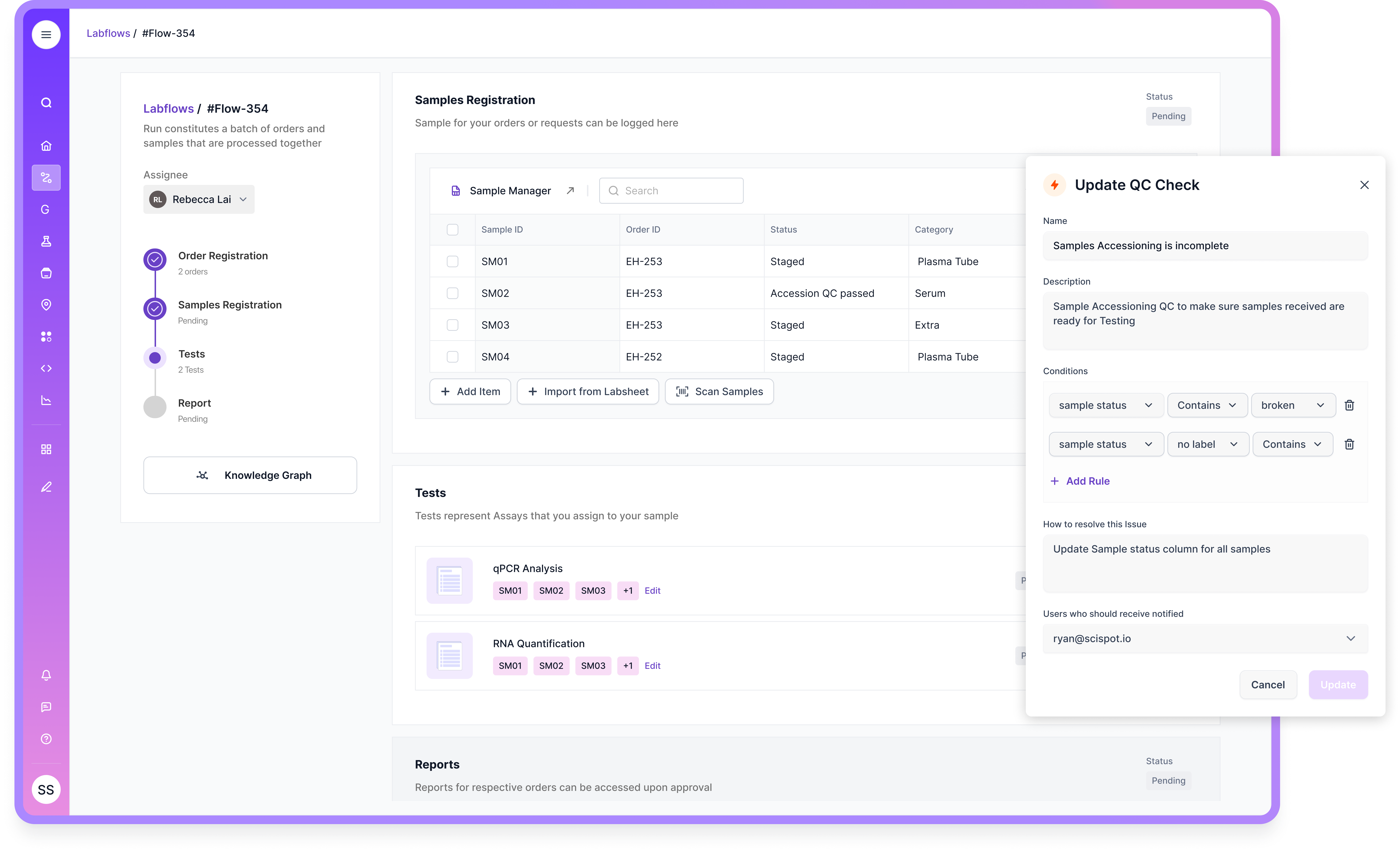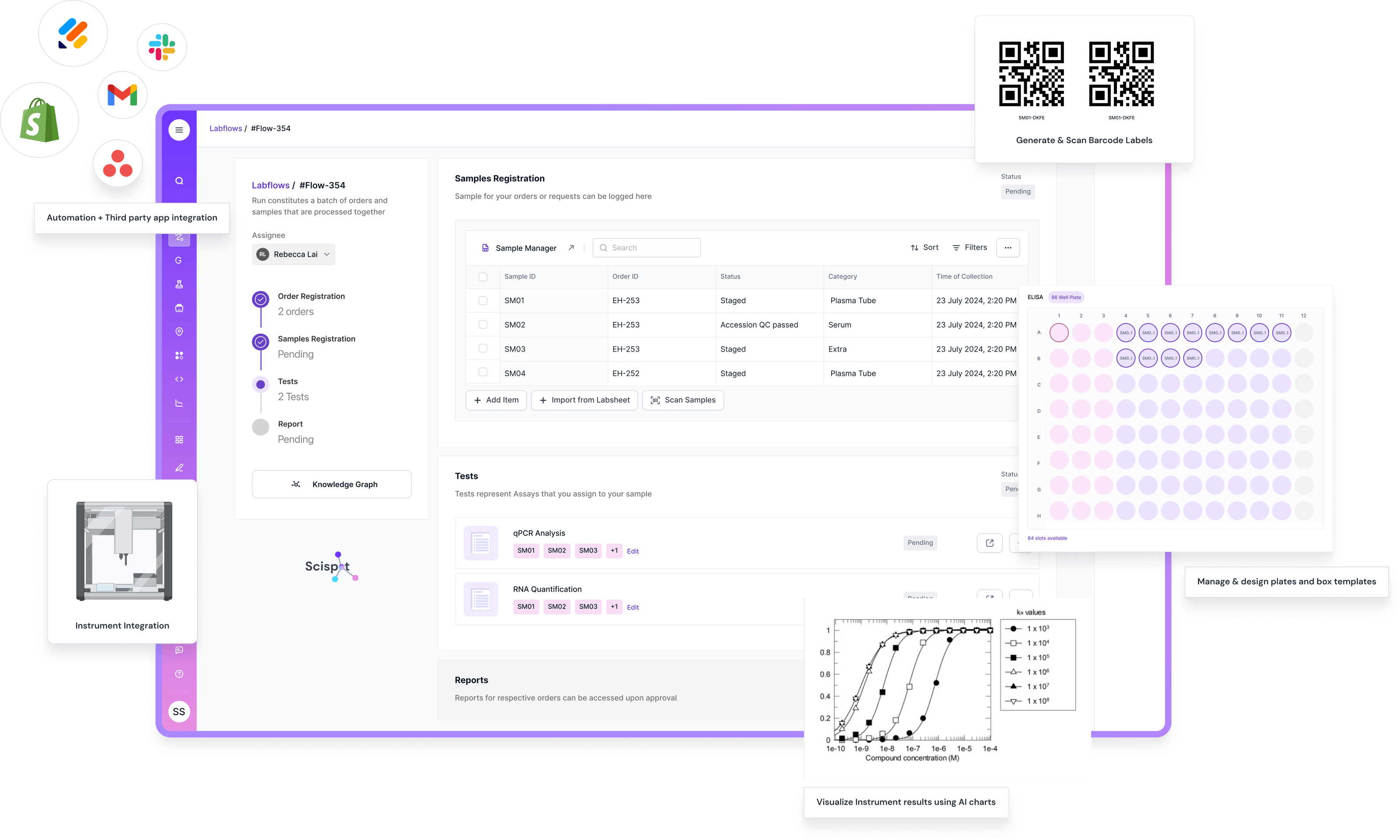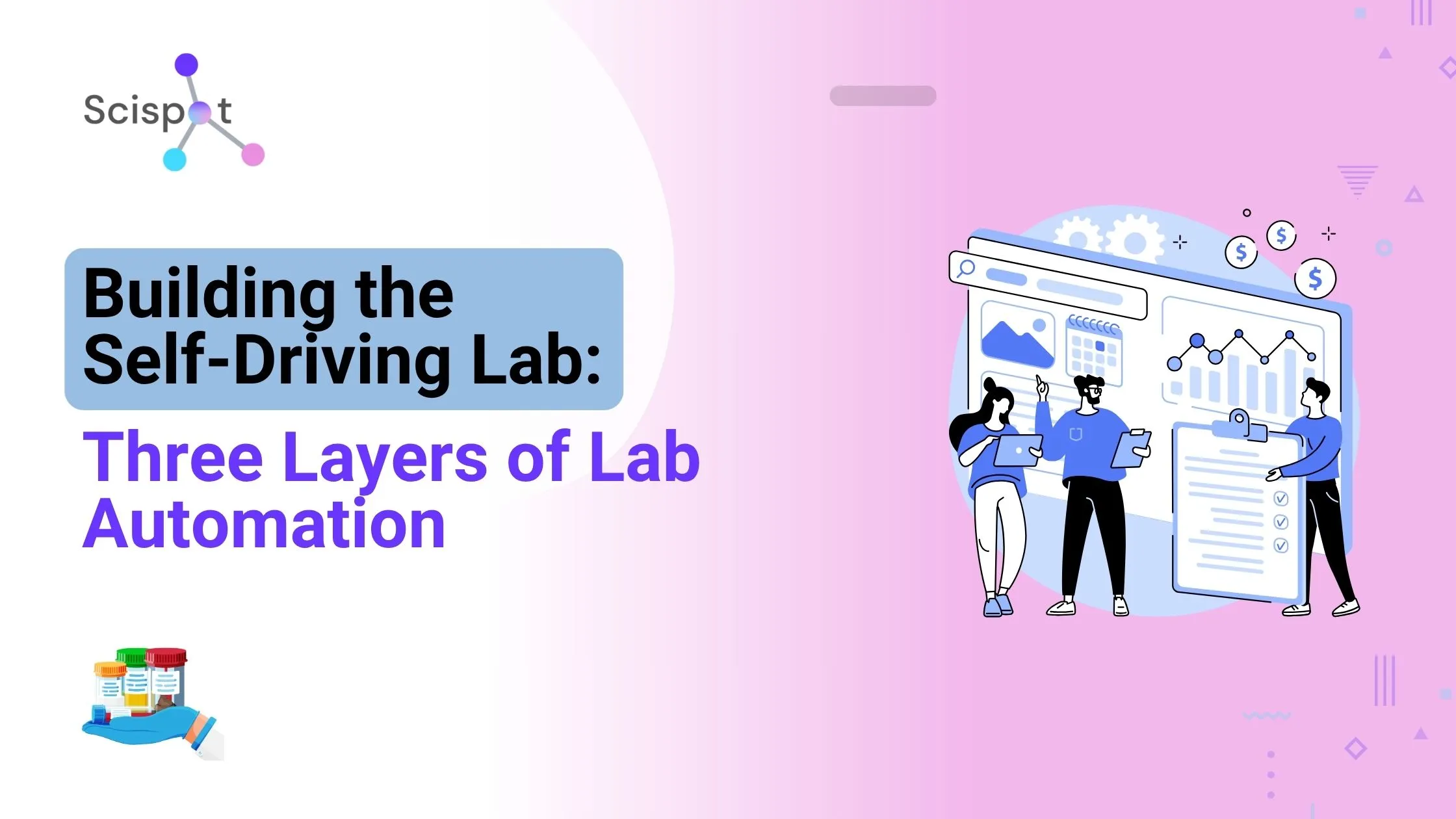Introduction
Imagine a lab where your samples, data, instruments, and even reports flow like a symphony. No last-minute scrambles. No wondering who touched what or why an experiment failed again. Just order, transparency, and velocity. That’s the promise of a self-driving lab. It’s not a gimmick. It’s not about replacing scientists. It’s about liberating them. When your systems handle the logistics, your people can return to thinking, experimenting, and creating. But getting there isn’t about adding more robots or automating a single step. It’s about layering autonomy. Just like we don’t build skyscrapers on sand, you can’t build automated labs on shaky data or broken workflows.
This blog explores the three critical layers that labs must embrace to achieve meaningful autonomy: a structured data plane, an intelligent automation plane, and a multi-agent coordination layer. And throughout this journey, Scispot offers the digital muscle to help labs not only envision this future but bring it to life.

Layer 1: The Data Plane
The first step to building a self-driving lab isn’t about machines or software. It’s about the quiet backbone—your data. Without clean, complete, and structured data, automation becomes a house of cards. If a sample’s ID is inconsistent, if the instrument file lacks metadata, or if records exist only in freeform notes, the lab can’t move forward. You can’t automate what you can’t trust.
That’s why the data plane is foundational. It’s about defining what your data should look like—clear schemas, consistent fields, typed values—and then enforcing those expectations every time a new piece of information enters the system. This isn’t just about making your data “neat.” It’s about making it reliable, interoperable, and traceable.
Scispot’s Labsheets™ make this real. They allow labs to create typed templates for experiments, samples, instruments, and more. Every field has rules, every row has lineage, and every update is captured. Scientists don’t have to think like database administrators. They just work in a structured environment where quality is built-in, not bolted on. This isn’t flashy tech—it’s a foundational piece of mind. When your data is ready, everything else becomes possible.
.jpeg)
Layer 2: The Automation Plane
Once your data has structure and integrity, it becomes the fuel for real automation. But not automation in the old sense—where someone writes a Python script or an engineer wires up an API and disappears. We’re talking about dynamic, event-based automation. Systems that know when a run is complete, what score the QC returned, and whether to trigger a next step or pause for human review.
This is the heart of a self-driving lab. When something happens—like an assay finishing—your system doesn’t wait for someone to check Slack or email. It springs into action. Maybe it runs a model, generates a report, or flags an outlier for review. If everything’s in spec, it might approve the run and move on. If something looks off, it pings a scientist. This isn’t science fiction. It’s how labs can work today.
With Scispot, automation is no longer reserved for teams with DevOps experience. Labs can build workflows with drag-and-drop ease or low-code customization. Triggers, jobs, validation rules, and even routing decisions can be embedded in policies. Instead of emailing people and hoping for follow-through, your lab becomes a living, breathing decision engine. And your team? They become reviewers and interpreters—not babysitters.

Layer 3: The Multi-Agent Plane
This is where things get powerful—and a little futuristic. When your data is structured and your workflows are automated, you open the door to intelligent coordination. Think of your lab like an airport: dozens of agents handling intake, security, luggage, and traffic control. But in your lab, these agents are digital. One handles data intake. Another runs QC. Another builds reports. Each knows its role, its thresholds, and when to raise a flag or hand off to a human.
These agents aren’t just scripts. They operate under shared policies, with rules that reflect your lab’s SLAs. They know that if a model produces results above a 92% threshold, it can auto-approve. If not, they defer to a scientist. Every action is logged. Every decision is auditable.
Scispot enables this kind of orchestration because it was built with modularity, APIs, and extensibility in mind. You’re not just using software—you’re building a digital ecosystem where each piece of your lab communicates, cooperates, and scales. And when the agents handle the grunt work, your people can focus on innovation, strategy, and solving hard problems.

Why This Matters
It’s tempting to think automation is just about efficiency. But for labs, it’s about more than saving time. It’s about avoiding burnout. It’s about giving back hours to exhausted researchers. It’s about reducing errors that cost money, delay results, and erode trust. And it’s about building a system where quality isn’t a nice-to-have—it’s guaranteed by design.
When your lab adopts this layered approach, everything changes. Scientists stop being the “glue” between systems. Data starts flowing in real time. Experiments become repeatable, traceable, and scalable. Reviews take minutes, not days. And audits no longer feel like fire drills—they become routine, even boring.
Scispot’s Role in the Journey
Scispot isn’t just a vendor in this space—it’s a platform built from the ground up to support layered lab autonomy. With typed Labsheets™, structured data capture, robust APIs, audit logs, workflow automation, and support for integrating agents, it’s uniquely positioned to help labs shift from reactive to proactive, from manual to self-driving.
Whether you’re starting with one assay or scaling your entire pipeline, Scispot grows with you. It doesn’t require hiring a fleet of engineers or buying siloed tools. It brings the architecture, the logic, and the experience to turn ambition into reality.

Conclusion
The dream of a self-driving lab isn’t about removing people. It’s about empowering them. It's about building a lab that works with you, not one that waits on you. And it’s possible—not in five years, but right now. You just need the right layers in place. Structure your data. Automate your logic. Coordinate your actions. When you do that, your lab becomes something greater. It becomes a system that scales, learns, and evolves with you. And Scispot is your partner on that journey—every step of the way.





.webp)
.webp)
.webp)



